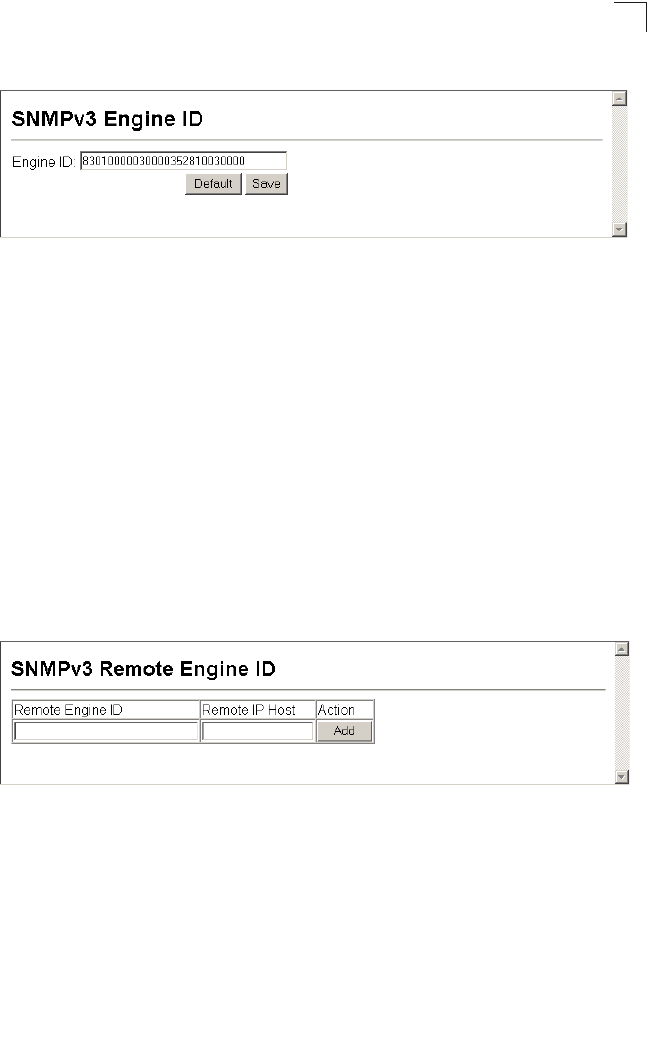
Simple Network Management Protocol
3-43
3
Web – Click SNMP, SNMPv3, Engine ID.
Figure 3-27 Setting an Engine ID
Specifying a Remote Engine ID
To send inform messages to an SNMPv3 user on a remote device, you must first
specify the engine identifier for the SNMP agent on the remote device where the
user resides. The remote engine ID is used to compute the security digest for
authenticating and encrypting packets sent to a user on the remote host.
SNMP passwords are localized using the engine ID of the authoritative agent. For
informs, the authoritative SNMP agent is the remote agent. You therefore need to
configure the remote agent’s SNMP engine ID before you can send proxy requests
or informs to it.
The engine ID can be specified by entering 9 to 64 hexadecimal characters (5 to 32
octets in hexadecimal format). If an odd number of characters are specified, a
trailing zero is added to the value to fill in the last octet. For example, the value
“123456789” is equivalent to “1234567890”.
Web – Click SNMP, SNMPv3, Remote Engine ID.
Figure 3-28 Setting a Remote Engine ID
Configuring SNMPv3 Users
Each SNMPv3 user is defined by a unique name. Users must be configured with a
specific security level and assigned to a group. The SNMPv3 group restricts users to
a specific read, write, and notify view.
Command Attributes
• User Name – The name of user connecting to the SNMP agent.
(Range: 1-32 characters)


















